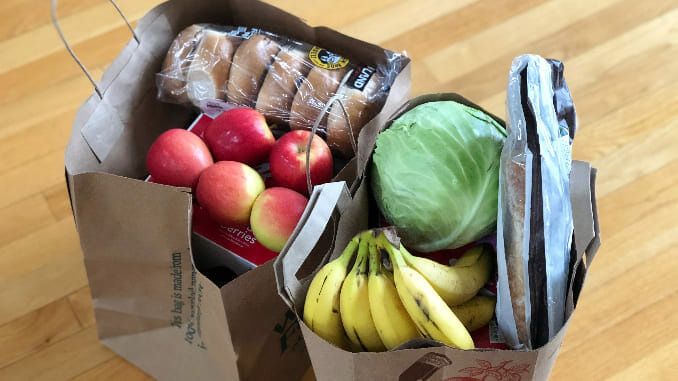Tips for Cutting Food Costs Now That Grocery Prices Are So High I Shed a Tear at The Self-Checkout
Photo by Maria Lin Kim/Unsplash
Over two years since the start of the pandemic, and we are still feeling the costs… quite literally. Across the world, food prices have been on the rise, due in part to shortages that began during the pandemic and compounded by Russia’s war in Ukraine, climate change and continued inflation. The U.N. has recently warned of what NPR describes as “crippling global shortages” in the food supply. Of course, the worst of these effects will hit the poorest countries—and poorest people—first.
If you’ve stepped foot in a grocery store lately, you’ve probably noticed the hike in prices yourself. Where I’m located in Boston, prices were up 7.3 percent from a year before in March of 2022. And experts expect that prices will continue to rise throughout the year. I know this jump in prices has affected my own purchasing decisions, and I’m trying to be more mindful when it comes to what I’m buying (and wasting).
Of course, food affordability is a systemic issue, and our individual solutions can only function as a Band-Aid for the problem—we need to ensure that everyone can afford healthy, culturally appropriate foods on a daily basis. But we also need practical solutions for our everyday lives, so I decided to gather some tips for cutting grocery costs as exorbitant prices continue to change what we eat. For those who are lucky enough to afford to shop at a grocery store or market, here are some ways to reduce your food bill.
1. Consider Cutting Meat
This isn’t a solution that everyone will love, but if you were trying to cut back on your meat consumption anyway, it’s not a bad idea to bypass the butcher if you’re trying to save money. In November of 2021, CNBC reported that beef prices had gone up a whopping 20 percent in the last year, and you’re likely seeing those numbers for yourself when you’re shopping for chicken, turkey and other types of meat as well. If you have time to prepare beans and other proteins like tempeh and tofu, this can be an easy way to lower your costs at the grocery store while doing something positive for the environment and the animals at the same time. Plus, beans are delicious, so if you get to eat more of them in the process, even better.